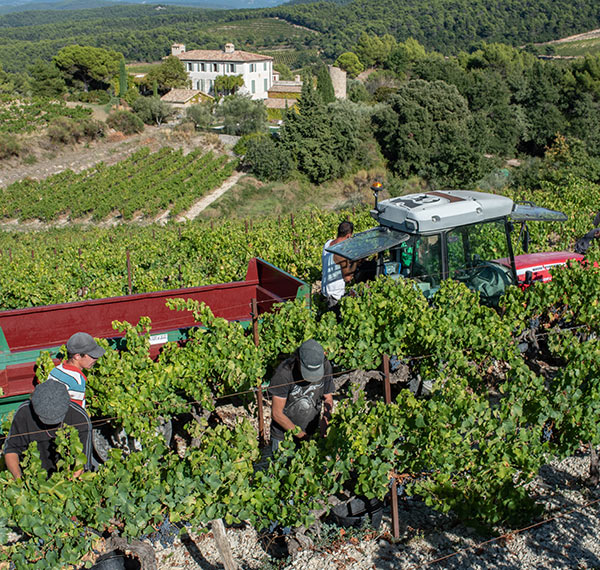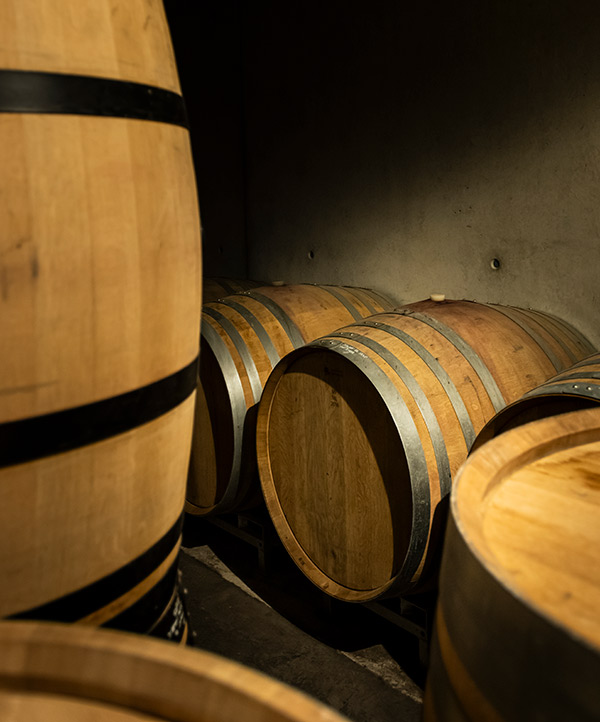Vinification: production secrets and techniques
from the vine to the bottle
How we tend our vines
Careful vineyard management which respects the health of the soil and cultivation of the vines is paramount to producing a top quality wine. At Domaine de Mourchon we are aware of the challenges a changing climate is presenting and so we employ certified programmes of organic and biodynamic viticulture in order to encourage a balanced and resilient ecosystem in which the biodiversity, soil and vines will thrive.
There is rarely a moment in the annual cycle of the vine that does not require skilled husbandry from pruning in the cold winter months, to careful canopy management during the vigorous growth period of the summer months through to the manual harvesting in September. When properly respected with attention to detail, these traditional methods ensure that the grapes arrive at maturity with optimum balance and can be carefully selected

Gravity fed winery
In the year 2000 we completed the construction of our gravity fed winery which has been built into the hillside on three vertical levels. The natural cooling and gravity flow means that there is less need for the intervention of machinery and manpower.
Vinification
Upon their arrival at the winery the grapes are quality controlled on a conveyer and are then lightly crushed before entering the winery. The juice is vinified in individual tanks according to variety and provenance so that the finished wine will express the nuance of terroir and varietal. Most fermentation occurs in stainless steel but some of the older reds and white grape varieties will be vinified in oak or ceramic jar.
Fermentation
Maturation


